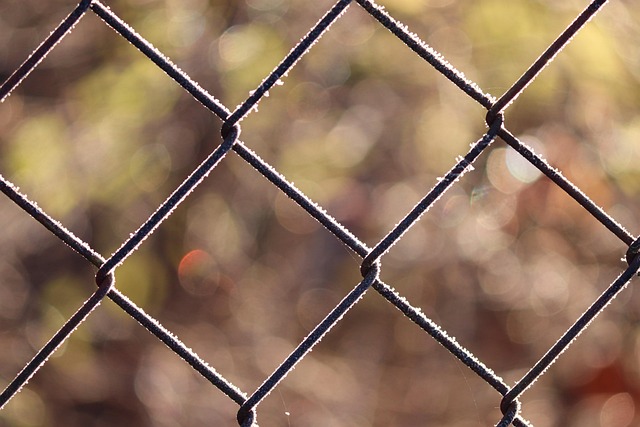In New Bedford, MA, a privacy fence isn’t just about enclosing your space; it’s an investment in peace of mind and outdoor comfort. This comprehensive guide delves into the world of privacy fences, exploring their benefits and diverse types to suit any homeowner’s needs. From preparing your property for installation to selecting durable materials and understanding local regulations, we’ll walk you through every step of the process. Learn how to create a secure, stylish barrier that enhances your New Bedford home.
- Understanding Privacy Fences: Benefits and Types
- Preparing Your New Bedford Property for Installation
- Choosing the Right Materials for Durability and Style
- The Installation Process: Step-by-Step Guide
- Post-Installation Care and Maintenance Tips
- Local Regulations and Permits for Privacy Fence Projects
Understanding Privacy Fences: Benefits and Types
Privacy fences serve as more than just physical barriers; they are investments in personal space and security, offering a range of benefits for homeowners in New Bedford, MA. These structures can block unwanted views from neighbors, provide secure play areas for children, and enhance home value by creating a sense of seclusion and peace. They also act as natural sound barriers, reducing noise pollution from nearby streets or busy neighborhoods.
When it comes to types, privacy fences come in various styles, materials, and designs. Wooden fences, popular for their classic aesthetic appeal, offer both privacy and warmth. Vinyl options are low-maintenance alternatives that come in different colors and textures, while chain link fences provide a more industrial look but can be easily customized with privacy panels or lattice work. Each type has its unique advantages, catering to different preferences, budgets, and levels of maintenance tolerance.
Preparing Your New Bedford Property for Installation
Before your privacy fence installation in New Bedford, MA can begin, there are several important preparation steps to ensure a smooth and successful project. Start by clearing the area where the fence will be installed. Remove any obstructions like plants, bushes, or debris that might interfere with construction. It’s also crucial to check local regulations and property restrictions related to fencing to avoid any legal issues.
Additionally, mark the exact location of your desired fence line using stakes and string to provide clear guidance for the installers. Ensure all necessary permits are in place to streamline the installation process. These initial preparations will not only make the installation more efficient but also contribute to a longer-lasting and aesthetically pleasing privacy fence.
Choosing the Right Materials for Durability and Style
When considering privacy fence installation in New Bedford, MA, selecting the right materials is paramount. The fence’s primary purpose is to provide a secure and private outdoor space, so durability is key. Opt for high-quality materials that can withstand varying weather conditions, from harsh winters to hot summers. Treated wood, vinyl, or even steel are popular choices known for their longevity. Each material offers unique aesthetic appeal; wood adds a natural touch, vinyl comes in various colors and styles, while steel provides a modern, sleek look.
Style should also align with your personal preference and the surrounding environment. Consider the fence’s design—will it complement your home’s architecture or blend seamlessly into the landscape? Textured finishes, patterns, and custom designs can enhance visual appeal. Additionally, think about functionality; do you want a solid fence for maximum privacy or a lattice design that allows some visibility while still providing a barrier? Making informed material and style choices will ensure a beautiful and durable privacy fence that meets your specific needs.
The Installation Process: Step-by-Step Guide
The installation process for a privacy fence in New Bedford, MA, involves several steps to ensure a secure and aesthetically pleasing finish. First, survey the area to be fenced, marking out the perimeter accurately. This step is crucial to determine the exact materials needed and ensure the fence aligns with local regulations. Next, prepare the ground by removing any debris or vegetation, ensuring a clean base for construction.
The actual installation begins with digging post holes at the marked locations. These holes should be deep enough to support the fence’s structural integrity. Once the holes are dug, insert the fence posts and secure them in place using concrete. Allow the concrete to set completely before proceeding. After the posts are firm, attach the vertical panels to the posts, ensuring they are level and aligned properly. Finally, add the top rail and any gates or accessories, completing the privacy fence installation.
Post-Installation Care and Maintenance Tips
After your privacy fence is installed, proper care and maintenance will ensure its longevity and aesthetic appeal. Regular cleaning is recommended, especially removing leaves, dirt, or debris that may accumulate over time. A soft brush or garden hose can be used for gentle cleaning. Avoid using harsh chemicals as they could damage the fence’s finish.
Inspect your privacy fence periodically for any signs of wear or damage, such as loose panels, rusted hardware, or cracked posts. Promptly address these issues to prevent further damage and maintain the fence’s structural integrity. Keep the area around the fence free from overgrowth to ensure optimal visibility and access.
Local Regulations and Permits for Privacy Fence Projects
When planning a privacy fence installation in New Bedford, MA, understanding local regulations and permitting requirements is crucial to ensure your project complies with city codes. New Bedford, like many municipalities, has specific guidelines governing fence construction, including height restrictions, permitted materials, and setback requirements from property lines and public spaces.
Before breaking ground, homeowners should check with the New Bedford Planning Department or relevant authorities to obtain necessary permits. This process typically involves submitting detailed plans outlining the fence’s design, dimensions, and proposed location. Permits ensure that fences are safe, aesthetically pleasing, and aligned with neighborhood standards, promoting harmony within the community.
